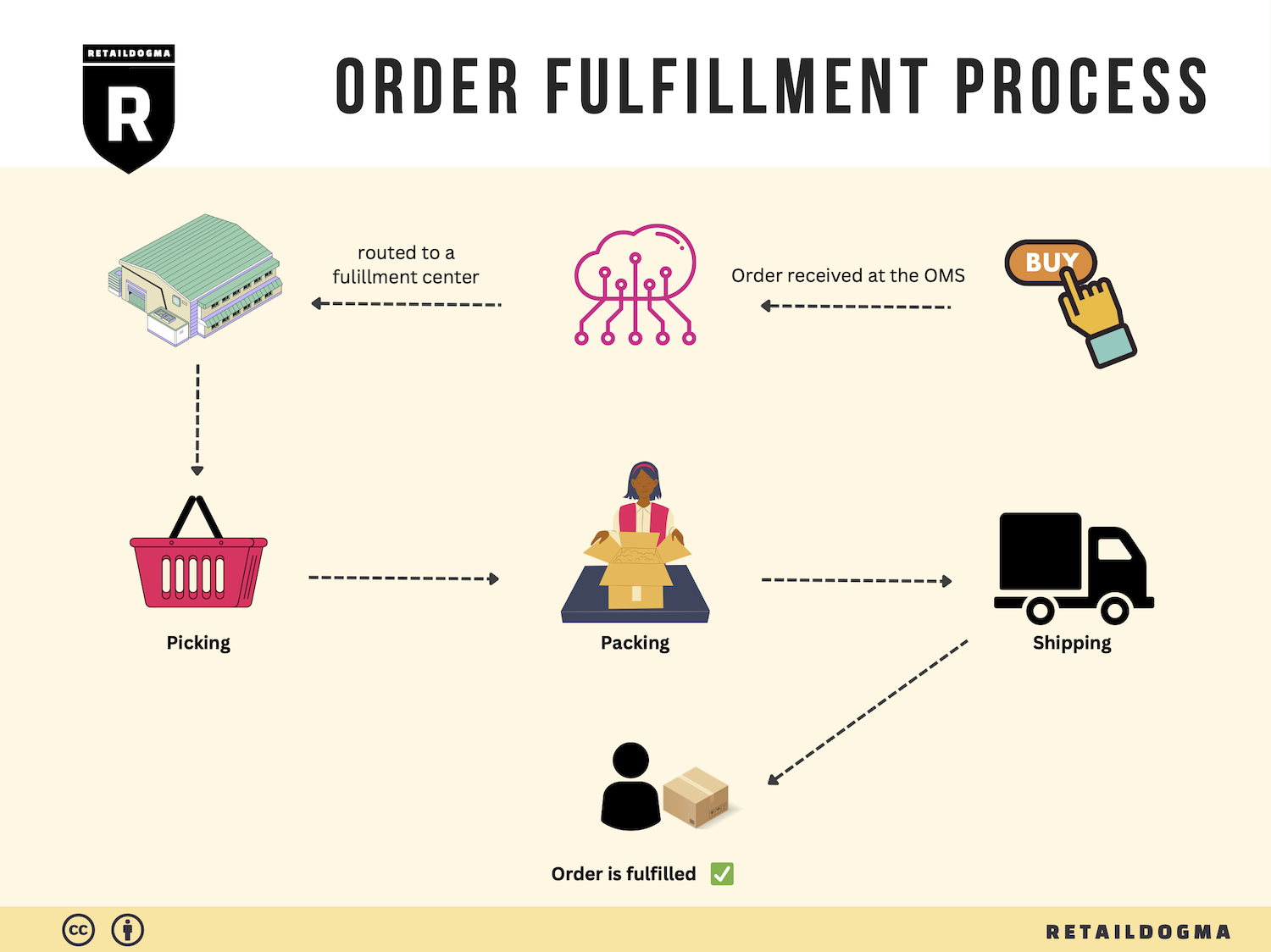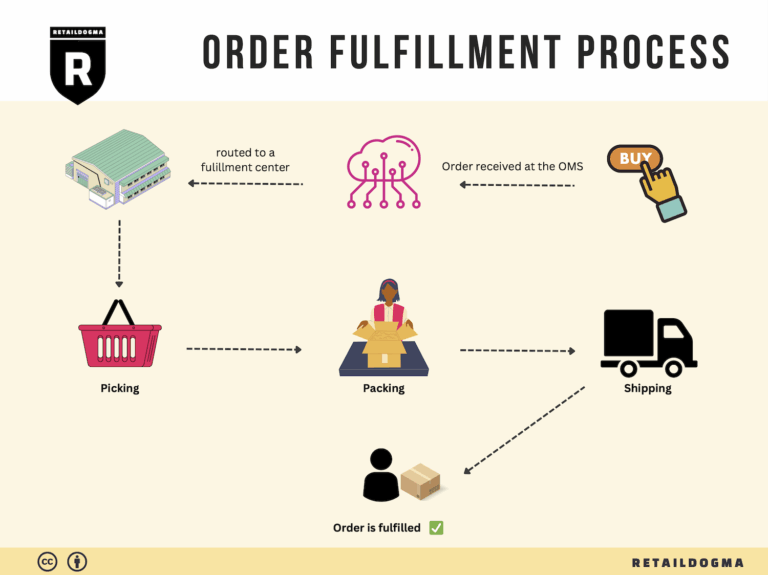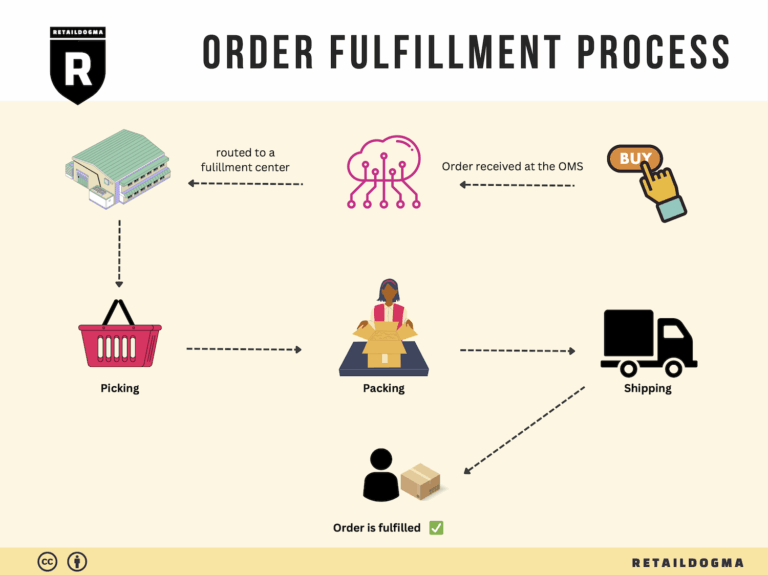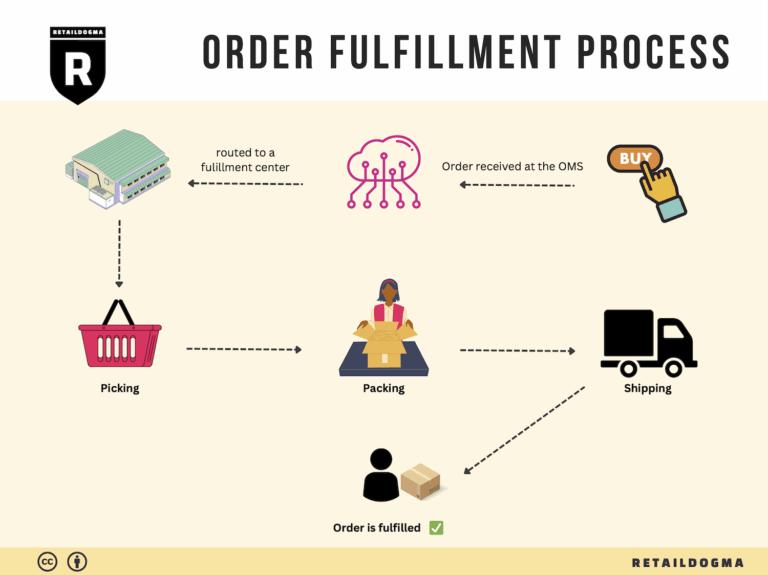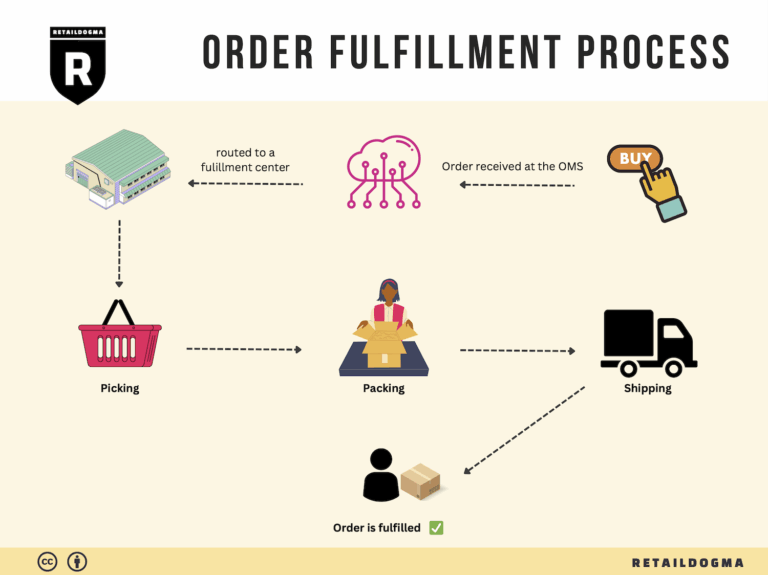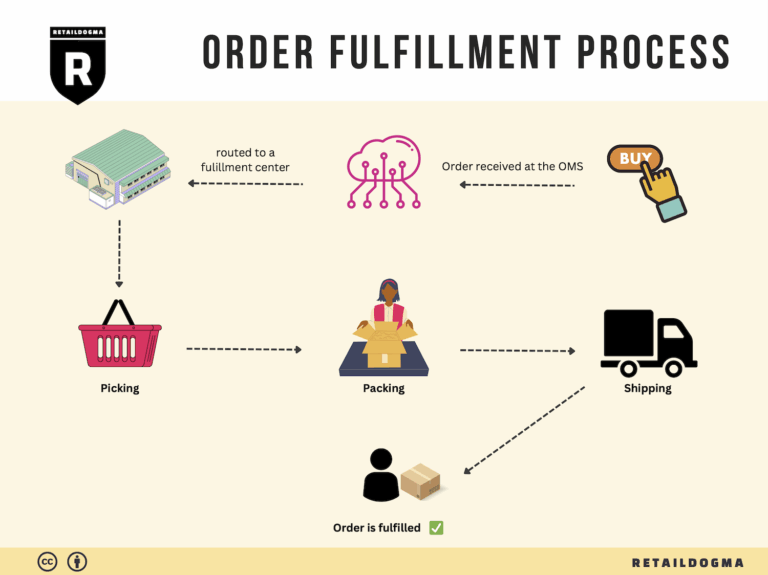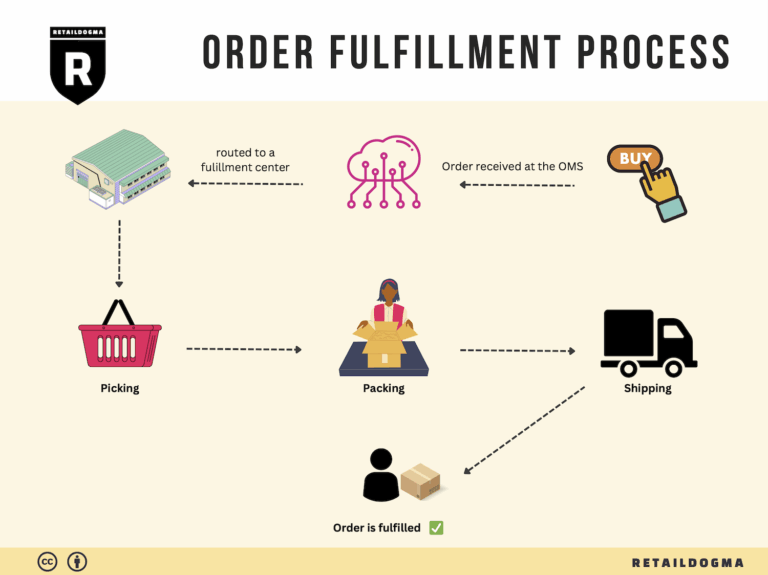What Is A Fulfillment Center? A Complete Guide (2025)
What is E-commerce Fulfillment? An Introduction for Growing Businesses
Overcoming the Packing and Shipping Challenge
As an e-commerce business owner, you’ve likely experienced the overwhelming nature of managing orders, packing products, and shipping them to customers. The excitement of growing your sales can quickly turn into a logistical nightmare if fulfillment processes aren’t effectively managed. The reality is, for many businesses, fulfillment is not just about sending products; it’s about creating an exceptional customer experience that fosters loyalty and repeat purchases.
Understanding E-commerce Fulfillment
At its core, e-commerce fulfillment refers to the entire process of receiving, processing, and delivering products to customers. This includes everything from inventory management and order processing to packing and shipping. As your business grows, so do the complexities of fulfillment. This guide aims to demystify the fulfillment landscape and provide you with the insights needed to streamline your logistics operations.
What This Guide Will Cover
In this comprehensive guide, we will explore several key aspects of e-commerce fulfillment that are crucial for scaling your business:
-
Fulfillment Models: We will break down different fulfillment models, including Third-Party Logistics (3PL) and Fulfillment by Amazon (FBA), highlighting their pros and cons so you can choose the best fit for your business.
-
Core Services: Understanding the essential services offered by fulfillment providers is critical. We’ll cover services such as order processing, inventory management, shipping solutions, and returns handling, ensuring you know what to expect from your partner.
-
Choosing the Right Partner: Selecting the right fulfillment partner can make or break your operations. We’ll outline the key criteria you should consider, from scalability and expertise in your niche to customer service and technology integration.
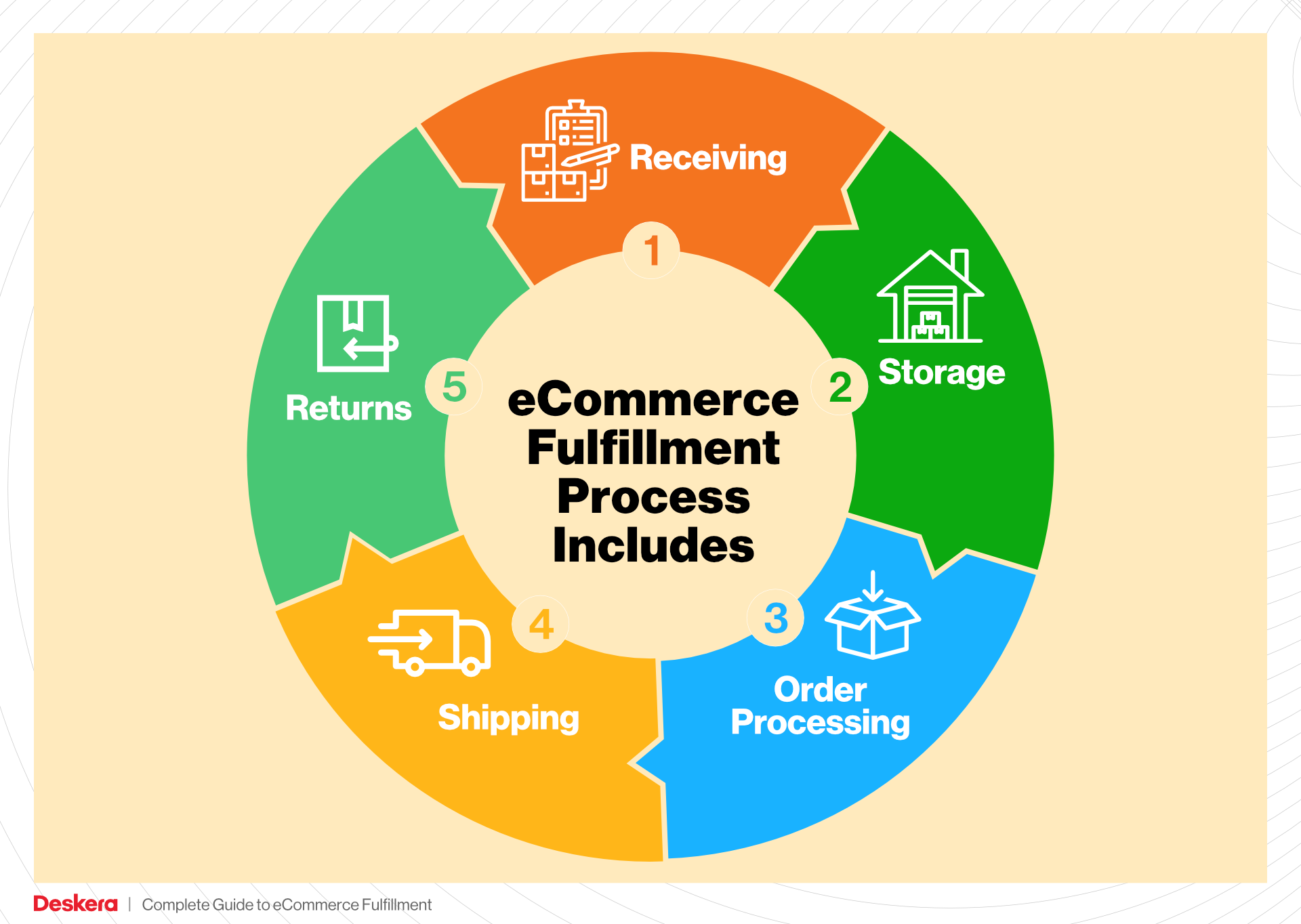
-
Pricing Structures: Navigating the costs associated with fulfillment can be daunting. We will clarify common pricing models and factors that influence costs, equipping you with the knowledge to make informed financial decisions.
Empowering Smart Logistics Decisions
The ultimate goal of this guide is to empower you to make informed and strategic decisions about your logistics operations. By understanding the intricacies of e-commerce fulfillment, you can focus on what matters most—growing your brand and delighting your customers. With the right fulfillment strategy in place, you can transform the logistics challenge into a competitive advantage, paving the way for sustained growth and success.
What You’ll Learn In This Guide
- What is E-commerce Fulfillment? An Introduction for Growing Businesses
- The Order Fulfillment Process: From ‘Buy’ Button to Customer’s Door
- Comparing Fulfillment Models: In-House vs. 3PL vs. Dropshipping
- A Deep Dive into Amazon FBA: Pros, Cons, and Who It’s For
- Core Services Offered by Fulfillment Centers
- How to Choose a Fulfillment Partner: A 6-Point Checklist
- Understanding Fulfillment Pricing: A Breakdown of Common Fees
- Frequently Asked Questions (FAQs) about Fulfillment
- Conclusion: Is Outsourcing Fulfillment the Right Move for Your Business?
- Important Disclaimer
The Order Fulfillment Process: From ‘Buy’ Button to Customer’s Door
1. Receiving Inventory
The order fulfillment process begins with receiving inventory, a critical step where products arrive at your fulfillment center. During this phase, shipments are unpacked, inspected for damage, and verified against purchase orders. This verification ensures that the quantities and types of products received match what was ordered from suppliers.
Why It’s Important: Accurate receiving prevents discrepancies in stock levels that can lead to fulfillment delays or customer dissatisfaction. A well-organized receiving process also sets the stage for effective inventory management.
Key Term: SKU (Stock Keeping Unit) – Each product is assigned a unique SKU, which aids in tracking inventory levels and helps streamline the receiving process.
2. Warehouse Storage
Once inventory is received, it must be stored efficiently in the warehouse. This involves categorizing products based on various factors such as size, type, and demand frequency. Effective storage solutions, including climate-controlled areas for sensitive beauty products, ensure that items remain in optimal condition until they are needed for orders.
Why It’s Important: Proper warehousing helps minimize picking errors, reduces the time taken to fulfill orders, and ensures that products are stored under conditions that maintain their quality, especially important for beauty and cosmetics items that may be sensitive to temperature and humidity.
Key Term: Bin Locations – This refers to specific areas within the warehouse designated for particular SKUs, facilitating quick retrieval during the picking process.
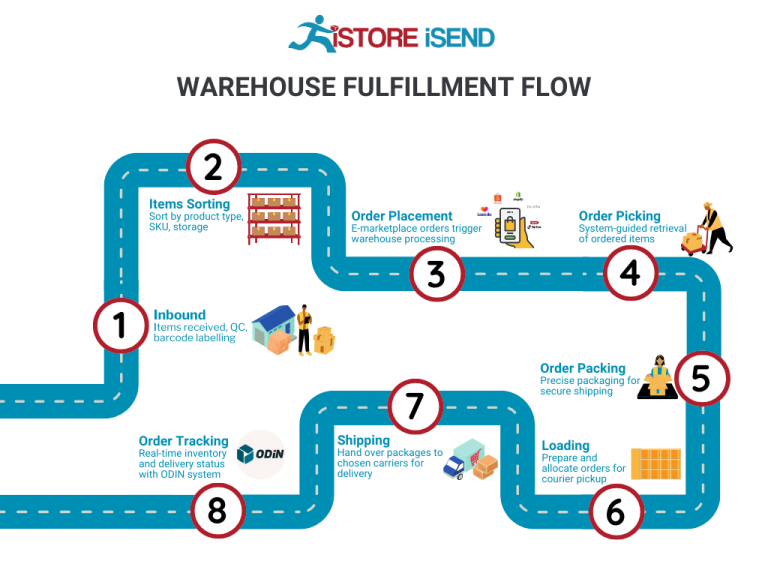
3. Order Picking
Order picking is the process of selecting the correct items from the warehouse to fulfill a customer order. This can be done manually or through automated systems. Pick lists, which detail the SKUs and quantities needed for each order, guide warehouse staff in efficiently gathering products.
Why It’s Important: Efficient picking directly impacts order accuracy and speed, both of which are crucial for customer satisfaction. Errors during this stage can lead to incorrect shipments and increased return rates, harming your brand’s reputation.
Key Term: Pick Lists – These are documents or digital displays that outline the items to be picked for each order, helping streamline the picking process and reduce errors.
4. Order Packing
After items are picked, they move to the packing station where they are prepared for shipment. During packing, items are carefully packaged to prevent damage during transit. This step often includes adding branded materials, such as custom tissue paper or thank-you notes, to enhance the customer experience.
Why It’s Important: Effective packing not only protects products but also reinforces your brand identity. A well-packaged order creates a memorable unboxing experience, which can encourage repeat purchases and customer loyalty.
Key Term: Branded Packaging – The use of customized materials that reflect your brand’s image during packing, making your product stand out and enhancing customer satisfaction.

5. Shipping & Delivery
The final step in the order fulfillment process is shipping and delivery. Once an order is packed, it is labeled and handed over to a shipping carrier. Businesses must choose reliable carriers that align with their delivery promises, whether that be same-day shipping, standard delivery, or international shipping.
Why It’s Important: Timely and reliable delivery is often the deciding factor for customer satisfaction. The shipping method selected can also affect overall costs, so businesses must balance speed with budget considerations.
Key Term: Last-Mile Delivery – This term refers to the final step of the delivery process, where the package is transported from a distribution center to the customer’s doorstep. Efficient last-mile delivery is critical for ensuring customer satisfaction and loyalty.
By understanding and optimizing each step of the order fulfillment process, beauty e-commerce businesses can enhance operational efficiency, improve customer satisfaction, and ultimately scale their sales effectively.
Comparing Fulfillment Models: In-House vs. 3PL vs. Dropshipping
Fulfillment Model Comparison Table
| Model | Who Handles Inventory | Best For (Business Stage) | Key Advantage | Key Disadvantage |
|---|---|---|---|---|
| In-House Fulfillment | The brand itself | Startups to mid-sized businesses | Full control over inventory and branding | High overhead costs and resource demands |
| Third-Party Logistics (3PL) | 3PL provider | Growing businesses and established brands | Expertise in logistics and scalability | Less control over inventory and processes |
| Dropshipping | Supplier or manufacturer | Startups and small businesses | Low upfront investment and inventory risk | Potentially lower margins and longer shipping times |
In-House Fulfillment
In-house fulfillment involves managing your own inventory and logistics operations within your business. This model is typically favored by startups and mid-sized businesses that want complete control over their inventory, branding, and customer experience. By handling fulfillment internally, companies can customize packaging, streamline processes, and maintain direct oversight of product quality. This approach allows for a tailored customer experience that aligns closely with brand values and messaging. However, the key disadvantage of in-house fulfillment is the significant overhead costs associated with warehousing, staffing, and technology investments. Additionally, as order volumes grow, the complexity of managing logistics increases, which can strain resources and distract from core business activities such as product development and marketing.
Third-Party Logistics (3PL)
Third-party logistics providers (3PLs) specialize in handling the logistics and fulfillment needs of businesses. This model is ideal for growing businesses and established brands looking to scale operations efficiently. 3PLs bring expertise in inventory management, shipping, and returns processing, allowing brands to focus on their core competencies while benefiting from the provider’s logistical capabilities. With scalable systems in place, 3PLs can quickly adapt to seasonal spikes and promotional demands, ensuring products are delivered on time. However, the trade-off is that businesses relinquish some control over their inventory and fulfillment processes, which may affect brand representation and customer experience. Additionally, the costs associated with 3PL services can vary significantly based on service levels and order volumes, necessitating careful financial planning.
Dropshipping
Dropshipping is a fulfillment model where the retailer does not keep products in stock but instead transfers customer orders directly to a supplier or manufacturer, who then ships the products directly to the customer. This model is particularly attractive for startups and small businesses, as it requires minimal upfront investment and eliminates the risks associated with holding inventory. Entrepreneurs can offer a wide range of products without the need for warehousing or fulfillment infrastructure. However, dropshipping comes with its own challenges. The retailer has little control over product quality, shipping times, and inventory levels, which can lead to customer dissatisfaction. Furthermore, profit margins are often lower due to the reliance on third-party suppliers, and delays in shipping can negatively impact the customer experience, making it crucial for businesses to choose reliable partners and maintain transparent communication with their customers.
In summary, the choice of fulfillment model depends on various factors, including business stage, growth ambitions, and operational capabilities. Each model has its own advantages and disadvantages, and businesses should carefully assess their unique needs and resources before deciding on the best approach for their fulfillment strategy.
A Deep Dive into Amazon FBA: Pros, Cons, and Who It’s For
Understanding Fulfillment by Amazon (FBA)
Fulfillment by Amazon (FBA) is a service provided by Amazon that allows sellers to store their products in Amazon’s fulfillment centers. Amazon then takes care of storage, packaging, shipping, and customer service on behalf of the sellers. This means that when a customer orders a product, Amazon handles all aspects of the fulfillment process, from picking and packing the item to shipping it and managing returns.
How FBA Works
-
Setting Up Your Account: To start using FBA, sellers need to create an Amazon Seller account and enroll in the FBA program.
-
Shipping Products to Amazon: Sellers prepare their products and ship them to Amazon’s designated fulfillment centers. Amazon provides detailed guidelines on packaging and labeling to ensure compliance.
-
Storage and Inventory Management: Once the products arrive at the fulfillment centers, they are stored until sold. Amazon tracks inventory levels and provides sellers with tools to monitor stock.
-
Order Fulfillment: When a customer places an order, Amazon picks, packs, and ships the product directly to the customer. This process is streamlined to ensure quick delivery, often within two days for Prime members.
-
Customer Service and Returns: Amazon handles all customer inquiries and returns related to the FBA products, providing a seamless experience for both the seller and the customer.
Pros of Using FBA
1. Prime Eligibility
One of the standout benefits of using FBA is that products become eligible for Amazon Prime, giving sellers access to millions of Prime members. This can significantly increase sales, as many customers prefer Prime for its fast and free shipping options.
2. Customer Trust
Products fulfilled by Amazon come with the assurance of Amazon’s customer service and return policies. This trust can lead to higher conversion rates, as customers feel more secure purchasing items backed by Amazon’s reputation.
3. Multi-Channel Fulfillment
FBA isn’t limited to Amazon alone. Sellers can use FBA to fulfill orders from their own websites or other marketplaces. This multi-channel fulfillment capability enables businesses to streamline their logistics processes while still offering fast shipping to customers.
4. Simplified Logistics
With FBA, sellers can offload the complexities of storage, packaging, and shipping. This allows businesses to focus more on product development and marketing rather than logistics management.
5. Scalability
FBA is designed to scale with your business. As order volumes increase, Amazon’s infrastructure can handle larger quantities without requiring sellers to invest in additional warehousing or logistics resources.
Cons of Using FBA
1. High Fees
FBA comes with various fees, including storage fees for inventory stored in Amazon’s warehouses and fulfillment fees for each unit shipped. These costs can add up, especially for low-margin products, impacting overall profitability.
2. Strict Inventory Rules
Amazon has strict inventory management policies, including limits on the amount of inventory sellers can send to fulfillment centers. If sellers exceed these limits, they may incur additional fees or face restrictions on their ability to fulfill orders.
3. Commingling Risks
FBA employs a commingling inventory system where products from different sellers may be stored together. This can lead to complications if a product is returned or if there are quality issues, as sellers may receive returns of products that are not theirs.
4. Loss of Control
When using FBA, sellers relinquish control over their fulfillment process. This includes aspects such as packaging and customer interaction, which may not align with a seller’s brand identity.
5. Potential for Long-Term Storage Fees
If products do not sell quickly, they may incur long-term storage fees, which can significantly impact profitability. This necessitates effective inventory management and forecasting to avoid overstocking.
Who is FBA Best For?
Fulfillment by Amazon is best suited for e-commerce businesses that:
-
Sell High-Volume Products: Businesses that can leverage Amazon’s reach and quick shipping options to achieve high sales volumes will benefit most from FBA.
-
Prioritize Customer Trust: Brands looking to enhance their reputation and customer service experience may find FBA’s reliability advantageous.
-
Seek to Scale Quickly: Companies aiming for rapid growth without the need for extensive investment in logistics infrastructure will find FBA’s scalable model appealing.
-
Want to Focus on Core Business Activities: Entrepreneurs who prefer to concentrate on product development, marketing, and sales rather than logistics and fulfillment can greatly benefit from the outsourcing that FBA provides.
In conclusion, while FBA offers numerous advantages that can streamline operations and enhance customer experiences, it is essential for businesses to carefully consider the associated costs and potential downsides. Understanding these factors will help e-commerce businesses make informed decisions about whether FBA is the right fulfillment strategy for them.
Core Services Offered by Fulfillment Centers
Inventory Management & Warehousing
Inventory management and warehousing are foundational services offered by fulfillment centers that are critical for e-commerce businesses, especially in the fast-paced beauty industry. This service involves the systematic tracking and storage of products, ensuring that stock levels are accurately maintained and that products are stored in optimal conditions.
What It Is:
Fulfillment centers utilize sophisticated inventory management systems that provide real-time visibility into stock levels, locations, and product conditions. For beauty products, which often require specific storage conditions (like climate control for temperature-sensitive items), these systems help in organizing products efficiently to minimize spoilage and damage.
Benefits to E-commerce Businesses:
1. Optimized Stock Levels: By maintaining accurate inventory counts, businesses can avoid stockouts or overstock situations, both of which can impact sales and cash flow.
2. Reduced Carrying Costs: Efficient warehousing practices help minimize costs associated with excess inventory, such as storage fees and insurance.
3. Enhanced Order Fulfillment: With organized inventory management, businesses can fulfill orders more quickly and accurately, leading to improved customer satisfaction and repeat purchases.
Pick and Pack Services
Pick and pack services are essential for ensuring that orders are processed efficiently and accurately. This service involves selecting products from inventory (picking) and preparing them for shipment (packing).
What It Is:
When an order is placed, fulfillment center staff retrieve the specified items from storage, package them according to branding and quality standards, and prepare them for shipment. This process is often supported by technology that optimizes picking routes and packing methods.
Benefits to E-commerce Businesses:
1. Speed and Accuracy: Streamlined pick and pack processes reduce the time it takes to fulfill orders, enhancing the overall customer experience by ensuring timely deliveries.
2. Custom Packaging Options: Fulfillment centers often offer branded packing solutions that elevate the unboxing experience, which is particularly important in the beauty industry where presentation can significantly influence customer perceptions.
3. Scalability: As businesses grow, fulfillment centers can easily adjust their pick and pack operations to handle increased order volumes, seasonal spikes, or promotional campaigns without compromising service quality.
Kitting and Assembly
Kitting and assembly services are vital for brands looking to offer bundled products or promotional packages. This service involves grouping individual items together into a single package or kit.
What It Is:
In the beauty industry, this could include assembling gift sets, promotional bundles, or subscription boxes that contain multiple products. Fulfillment centers manage the entire process, from sourcing the products to assembling them into finished kits.
Benefits to E-commerce Businesses:
1. Enhanced Customer Appeal: Kitting allows businesses to create attractive bundles that appeal to consumers, particularly during holidays or special promotions, thereby increasing average order value.
2. Streamlined Operations: By outsourcing kitting and assembly, businesses can focus on product development and marketing while ensuring that promotional efforts are executed smoothly.
3. Customization Opportunities: Fulfillment centers can accommodate personalized kits based on customer preferences, further enhancing the shopping experience and fostering brand loyalty.
Returns Management (Reverse Logistics)
Returns management, or reverse logistics, is a crucial service that addresses the complexities of handling returned products. In the beauty industry, where product integrity is paramount, effective returns management can significantly impact customer satisfaction and operational efficiency.
What It Is:
Returns management involves the processes and systems used to handle product returns, including inspecting returned items, restocking saleable products, and managing unsellable inventory. Fulfillment centers often provide detailed reporting on returns to help businesses understand patterns and improve future offerings.
Benefits to E-commerce Businesses:
1. Customer Retention: A seamless returns process encourages customers to shop with confidence, knowing they can return products if they are not satisfied, which is particularly important in the beauty sector where product compatibility can vary.
2. Inventory Management: Effective returns handling allows businesses to quickly reintegrate returned products back into inventory, ensuring that stock levels remain accurate and up to date.
3. Data Insights: By analyzing return trends, businesses can gain valuable insights into product performance, customer preferences, and potential areas for improvement in product offerings or descriptions.
In summary, leveraging the core services offered by fulfillment centers can significantly enhance the efficiency and effectiveness of e-commerce operations for beauty brands. By focusing on inventory management, pick and pack services, kitting and assembly, and returns management, businesses can streamline their logistics, improve customer experiences, and ultimately drive growth.
How to Choose a Fulfillment Partner: A 6-Point Checklist
Location & Warehouse Network
Importance:
The geographic location of your fulfillment partner is crucial for minimizing shipping times and costs. A strategically located warehouse network can enhance your delivery speed, particularly for e-commerce businesses that promise fast shipping options.
Questions to Ask:
– What is the location of your warehouses, and how does that align with my target customer base?
– Do you have multiple fulfillment centers, and how does that affect shipping times and costs?
– Can you handle international shipping, and if so, what are the logistics involved?
Technology & Integrations
Importance:
In today’s digital landscape, having a technology-driven fulfillment partner is essential. A robust tech stack allows for seamless integration with your e-commerce platforms, real-time inventory tracking, and automated order processing, which can significantly enhance operational efficiency.
Questions to Ask:
– What e-commerce platforms do you integrate with (e.g., Shopify, WooCommerce, Magento)?
– Do you provide real-time reporting dashboards, and what metrics can I track?
– How does your system handle inventory management, and what tools do you use for order processing?
Specializations (e.g., cold storage, oversized items)
Importance:
Different products have unique storage and handling requirements. If your beauty products include sensitive items like skincare that require climate control or fragile items that need special handling, partnering with a 3PL that specializes in these areas is vital.
Questions to Ask:
– Do you have specific facilities for temperature-sensitive items, and what measures are in place to maintain conditions?
– How do you handle fragile items to ensure they arrive in perfect condition?
– Can you accommodate special packaging needs, such as branded or customized packaging for beauty products?
Scalability & Capacity
Importance:
As your business grows, your fulfillment needs will evolve. A partner that can scale operations—whether to handle seasonal spikes or an increase in regular orders—is essential for maintaining customer satisfaction and operational efficiency.
Questions to Ask:
– How do you manage seasonal demand fluctuations, and what solutions do you offer for peak times?
– What is your current capacity, and how quickly can you scale if my order volume increases?
– Do you have the ability to support subscription services or kitting and bundling for promotions?
Pricing and Contracts
Importance:
Understanding the pricing structure and contract terms upfront can prevent hidden fees and ensure you are getting the best value for your investment. Clear terms regarding shipping, storage, and additional services can help you budget effectively.
Questions to Ask:
– What is your pricing model (e.g., per order, per item, monthly fees), and are there any hidden costs?
– How do you handle returns and what are the associated costs?
– Can you provide a sample contract, and what are the terms for terminating or adjusting the agreement?
Customer Support & Reviews
Importance:
Effective customer support is critical for resolving issues quickly and maintaining a positive relationship with your fulfillment partner. Additionally, reviewing customer feedback can provide insights into their reliability and service quality.
Questions to Ask:
– What level of customer support do you offer (e.g., dedicated account manager, 24/7 support)?
– How do you handle order errors or customer complaints, and what is the typical resolution time?
– Can you provide references or case studies from similar businesses in the beauty industry?
Conclusion
Choosing the right fulfillment partner is a critical decision for scaling your beauty e-commerce business. By using this checklist, you can ensure that you’re asking the right questions and considering the most important factors in your selection process. A well-chosen partner can enhance your operational efficiency, improve customer satisfaction, and ultimately help you grow your business.
Understanding Fulfillment Pricing: A Breakdown of Common Fees
Initial Setup Fees
Initial setup fees are one-time charges associated with integrating your e-commerce platform with a fulfillment provider’s system. These fees may cover account setup, inventory onboarding, and any necessary technology integration. The cost typically varies based on the complexity of your operations and the fulfillment provider’s capabilities.
To calculate initial setup fees, fulfillment centers usually evaluate the following factors:
– Inventory Volume: The number of SKUs and total units being onboarded can influence the complexity and time required for setup.
– System Integration: If your e-commerce platform requires extensive customization or integration with existing software, costs may increase.
– Training and Support: Some providers charge for initial training sessions for your team to familiarize them with the new system and processes.
Receiving Fees
Receiving fees are charged when your inventory arrives at the fulfillment center. This fee is intended to cover the costs of unloading, inspecting, and storing the products.
Calculating receiving fees typically involves:
– Volume of Goods: Fees are often based on the number of pallets or bins received. The more inventory you send, the higher the fee.
– Condition of Goods: If products require special handling due to their fragile nature (as is common with beauty products), additional charges may apply.
– Inspection Services: If you request detailed inspections or quality checks upon arrival, this could also incur extra costs.
Storage Fees (per pallet/bin)
Storage fees are ongoing charges for keeping your inventory in the fulfillment center. These fees can vary widely based on the size and type of products stored, as well as the duration of storage.
Storage fees are generally calculated as follows:
– Space Utilization: Costs are typically assessed on a per-pallet or per-bin basis. For beauty products, which may require specific storage conditions (like climate control), fees might be higher.
– Duration of Storage: Some fulfillment centers may offer tiered pricing based on how long your products remain in storage. Long-term storage could incur additional fees.
– Inventory Turnover: If your products have a high turnover rate, you may benefit from lower storage fees compared to products that sit for extended periods.
Pick & Pack Fees (per item/order)
Pick and pack fees are incurred each time an order is processed. These fees cover the labor and materials used to select items from storage and package them for shipment.
The calculation of pick and pack fees generally involves:
– Number of Items: Fees are often charged per item picked. For example, if an order contains three items, the pick and pack fee will reflect that.
– Order Complexity: If an order requires special packaging or handling (like branded packaging or fragile items), this could result in higher fees.
– Kitting Services: If you offer bundled products or special promotions that require kitting, additional charges will apply based on the complexity of the assembly.
Shipping Fees
Shipping fees cover the cost of transporting your products to customers. These fees can vary significantly based on the destination, shipping method, and carrier used.
Shipping fees are usually calculated based on:
– Destination: Domestic versus international shipping rates can differ greatly. Additionally, rural areas may incur higher shipping costs.
– Weight and Dimensions: Carriers often charge based on the weight and size of the package. Beauty products, especially those in glass containers, can be heavier and more fragile, impacting costs.
– Shipping Speed: Expedited shipping options will typically incur higher fees than standard shipping. Offering multiple shipping options can help you manage costs while meeting customer expectations.
Tips for Getting an Accurate Quote
-
Provide Detailed Information: When requesting quotes from fulfillment providers, be specific about your product types, average order volume, and any special handling needs.
-
Ask About Hidden Fees: Inquire about any potential hidden fees, such as those for returns, special packaging, or additional services like customer support.
-
Compare Multiple Providers: Don’t settle for the first quote. Compare offers from multiple fulfillment centers to find the best fit for your needs and budget.
-
Clarify Pricing Models: Understand whether fees are fixed or variable based on your volume and seasonal fluctuations. This can impact your long-term costs significantly.
-
Negotiate Terms: Many fulfillment providers are open to negotiations, especially if you can commit to a certain volume of orders or a long-term partnership.
By understanding these common fees and how they are calculated, e-commerce business owners can make informed decisions when selecting a fulfillment partner, ultimately supporting their growth and operational efficiency.
Frequently Asked Questions (FAQs) about Fulfillment
1. What is beauty fulfillment?
Beauty fulfillment refers to the specialized logistics and order management processes tailored to the unique requirements of beauty and cosmetics products. This includes careful handling of delicate items, branded packaging, temperature control, and inventory management to ensure products are delivered in perfect condition to customers.
2. How does beauty fulfillment differ from general fulfillment?
Beauty fulfillment involves specific processes designed to cater to the unique challenges of beauty products, such as fragility, expiration dates, and the need for branded packaging. While general fulfillment centers handle a variety of products, beauty fulfillment providers focus on maintaining the integrity and presentation of beauty items throughout the supply chain.
3. What services do beauty fulfillment providers typically offer?
Beauty fulfillment providers often offer a range of services including:
– Branded and custom packaging
– Product personalization (e.g., engraving, labeling)
– Climate-controlled storage
– Returns processing
– International shipping
– Real-time reporting and inventory management
– Subscription and kitting services
4. What is a 3PL, and how does it relate to beauty fulfillment?
A 3PL (Third-Party Logistics) provider is a company that manages a business’s logistics operations, including warehousing, order fulfillment, and shipping. In beauty fulfillment, 3PLs specialize in handling the specific needs of beauty products, ensuring they are stored, packed, and shipped with the utmost care to maintain their quality and brand representation.
5. How much do fulfillment services cost?
The cost of fulfillment services can vary widely based on several factors, including order volume, the complexity of services required, and the specific needs of the beauty products. Businesses should expect to pay for storage, pick and pack services, shipping, and any additional value-added services. It’s advisable to request tailored quotes from fulfillment providers to get an accurate estimate based on your business model.
6. What are the benefits of outsourcing beauty fulfillment?
Outsourcing beauty fulfillment allows businesses to:
– Focus on core activities like product development and marketing.
– Leverage the expertise of fulfillment providers in managing logistics efficiently.
– Scale operations easily during peak seasons without the need for significant upfront investment.
– Ensure compliance with industry standards and regulations related to product storage and shipping.
7. How do fulfillment providers handle returns and exchanges?
Fulfillment providers typically manage returns by following the client’s guidelines, which may include issuing return labels, inspecting returned products, and determining whether they can be restocked or need to be disposed of. Detailed reporting on returns is usually provided to help brands understand trends and improve their offerings.
8. Can beauty fulfillment providers support international shipping?
Yes, many beauty fulfillment providers have the capability to manage international shipping. They often partner with trusted logistics providers to ensure a seamless cross-border shopping experience, offering transparent pricing with no hidden fees at delivery, and ensuring compliance with various international regulations.
9. What is the difference between a warehouse and a fulfillment center?
A warehouse is primarily used for storage of goods, while a fulfillment center is designed for processing orders and managing the logistics of getting products from storage to customers. Fulfillment centers typically have more advanced technology for inventory management, order processing, and shipping operations, focusing on speed and efficiency in fulfilling customer orders.
10. How can I choose the right beauty fulfillment provider for my business?
To choose the right beauty fulfillment provider, consider the following factors:
– Experience and specialization in beauty products
– Range of services offered (e.g., packaging, returns processing)
– Technology and reporting capabilities
– Scalability of operations to handle peak seasons
– Customer service and support quality
– Client testimonials and case studies
Conducting thorough research and requesting proposals from multiple providers can help you make an informed decision.
Conclusion: Is Outsourcing Fulfillment the Right Move for Your Business?
Evaluating the Benefits of Outsourcing Fulfillment
Outsourcing your fulfillment operations can be a transformative strategy for scaling your beauty brand. One of the most significant advantages is the time savings it provides. By partnering with a dedicated fulfillment service, you can redirect your focus from managing logistics to enhancing product development and marketing efforts. This shift allows you to innovate and grow your brand more effectively.
Scalability is another critical benefit. The beauty industry is characterized by seasonal spikes and promotional events that can strain your existing logistics capabilities. A fulfillment partner equipped with scalable systems can adeptly handle these fluctuations, ensuring that your operations remain efficient and responsive. Whether you experience a sudden surge in orders during a holiday season or require robust management during a product launch, a reliable partner can adapt to meet your needs without compromising service quality.
Expertise is an invaluable asset that fulfillment providers bring to the table. With specialized knowledge in handling beauty products, they are well-versed in the unique challenges of your industry—such as maintaining product integrity and managing inventory effectively. Their experience in logistics means you can trust that your products will be stored, packed, and shipped according to the highest standards, ultimately enhancing customer satisfaction and loyalty.
However, the success of outsourcing fulfillment hinges on selecting the right partner. It’s essential to assess potential providers based on their capabilities, service quality, and alignment with your brand values.
Take Action
Consider conducting an audit of your current shipping processes. Evaluate whether the time spent on fulfillment tasks is detracting from your strategic goals. If you find that logistics management is consuming valuable resources, it may be time to explore fulfillment partnerships that can help propel your brand forward. By making an informed decision, you can unlock growth potential and ensure that your beauty brand not only meets but exceeds customer expectations.
Important Disclaimer
⚠️ Important Disclaimer
The information in this guide is for educational purposes. Fulfillment services, pricing, and platform features change frequently. Always conduct your own due diligence and consult with providers directly before making business decisions.
